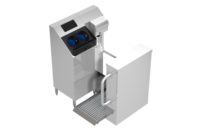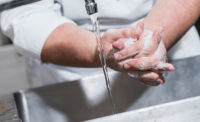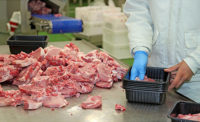One of food safety training’s big challenges is monotony. It can be difficult to find fresh ways to promote hygiene. Yet, while handwashing might seem trivial, not doing it properly in a food-processing facility could lead to a costly mistake.
Employee hygiene is a leading cause of food safety incidents, costing the industry billions, and damaging public health and brand image. Data shows engaged employees are more likely to apply correct hygiene and behavior on the floor. The key to engagement lies not only in the quality of training, but in the quantity and cadence of reinforcement.
Make it your own
Hygiene training that incorporates your own employees and facilities makes a bigger impact. When workers can recognize themselves or work environments in training material, they’re more likely to pay attention. Training that depicts the protein-processing floor, and not a packaging line, gains credibility in protein workers’ minds.
Supervisor buy-in is also crucial, and customizable courses help leaders with limited time. Hygiene courses they can easily edit with a PowerPoint plug-in makes it easy for even novice trainers to create dynamic hygiene training.
Elevate to coaching
Frontline workers often benefit from one-on-one coaching. Some learners need a closer look to internalize hygiene training concepts. Unfortunately, coaching takes time and resources amid tight schedules and lean workforces.
Utilizing a floor-friendly mobile app that can conduct formal observations while recording results for later access is becoming more common. It fosters interaction between supervisor and employee and documents for compliance. Since verifying correct behaviors is now required under USDA regulations, a tool that can both perform and record observations saves time and maintains safety.
Incentivize workers
When workers are incentivized, they’re more motivated to perform, leading to higher retention, less turnover, and greater productivity. Requiring participation is one way to assess your safety training program’s efficacy. Courseware that uses gamification, quizzes and interactive elements has proven more effective than passive learning.
Healthy competition between team members also keeps workers alert. When workers know they must answer questions, they pay closer attention. Interactive methods that enliven “boring” hygiene training makes a difference on the floor.
Celebrate hygiene victories
An effective training program shouldn’t be all business, all the time. While hygiene is a serious matter, incorporating levity at the right times keeps employees engaged. Celebrate successes with visual cues that promote wins, such as “X Days Since the Last Accident.” The more your employees feel valued, the more likely they will feel a sense of ownership in their work — including owning hygiene on the floor.
Build recognizable internal safety brand
An internal safety brand can remind workers to practice good hygiene on the floor. Many companies have devised a separate safety brand with its own look and feel, logo and slogan. A recognizable brand resonates with employees and reminds them to keep safety — and hygiene — top of mind. NP







Report Abusive Comment